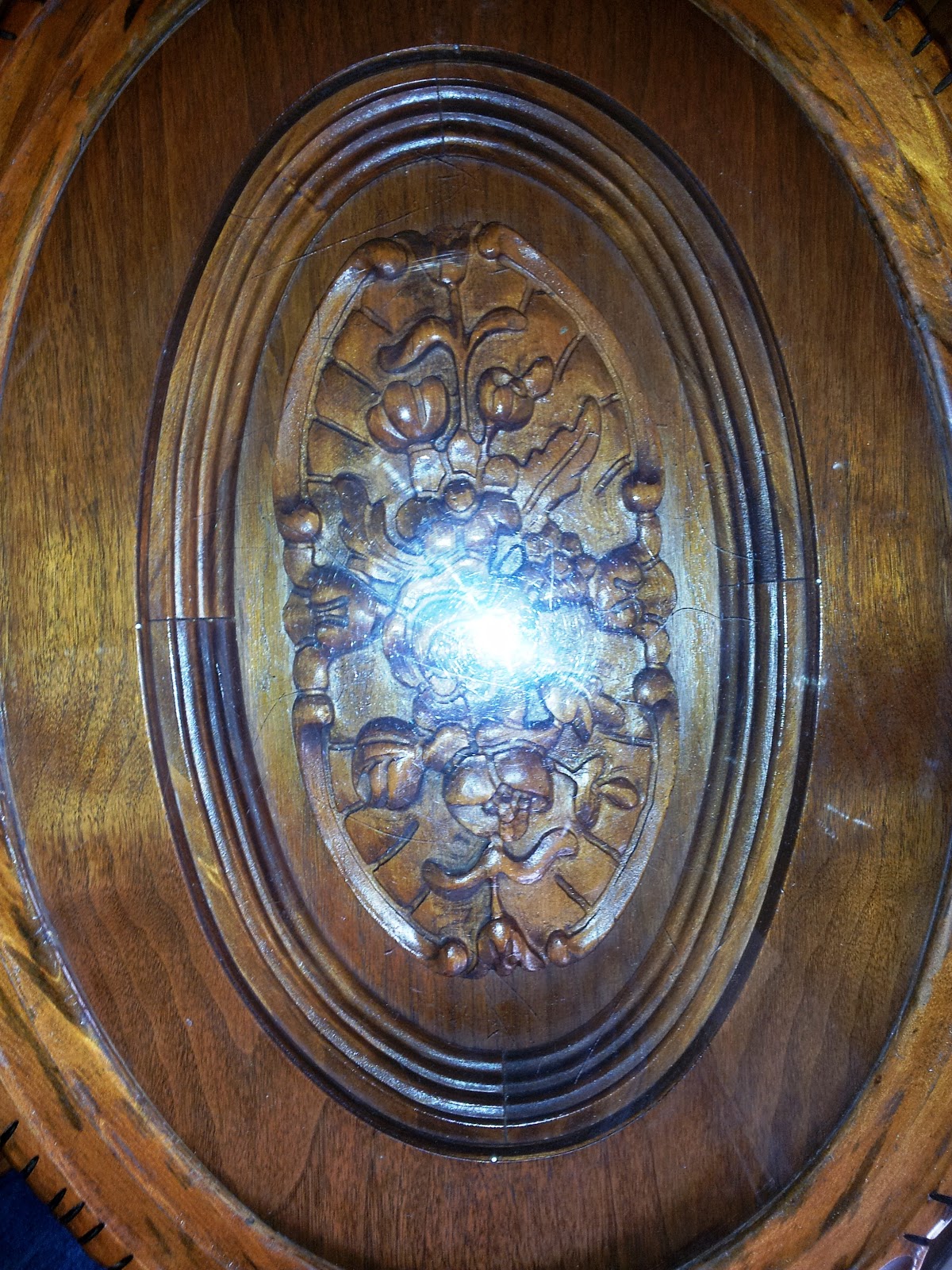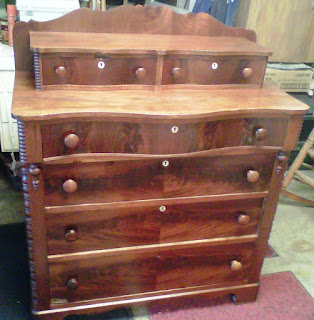 Here's a look I didn't show you....till now.
Here's a look I didn't show you....till now. I introduced the armoire, but not the
beehive. Get a look at this! Yup, a hornet's nest.
These bees know quality when they see it; they built their home in a corner of the high-rent district. My customer has told me some interesting and really fun stuff about his armoire. It's been in his family for a very l-o-n-g time. Originally it's from North Carolina--most likely the place where it was fabricated. Repeated inside the case in strategic places on its back, sides, floor and front I find the number 16--a pattern number indicating the compatability of these pieces for assembly as
this particular model.
At the time the armoire was built, homes in North Carolina were taxed according to the number of bedrooms in each home. One of the defining features of a "bedroom" was the presence of a built-in closet. So to avoid the "bedroom tax" many homes were completed with rooms on the upper floors that purposefully did not include built-in closets. Then, wise furniture makers capitalized on the demand for stand-alone closets--the armoire! Armoires like this were designed and constructed to be carried up the stairs to bedrooms.
But as you can see, this armoire is both TALL and handsome--and heavy! It stands a full 86'' from the floor to the tip of it's top cornice and it's four feet wide. Those dimensions are going to present some interesting challenges when it comes to its maneuverability--getting it up the stairs, around the tight hallway corners and through small room doors.
So it was also designed so it could be easily disassembled into seven separate pieces....its top, 2-sides, the front, the inside floor, the drawer case, and the back. Each can then be carried up the stairs separately and reassembled for service--ya just need a screwdriver. Is that cool or what!
Given the size of this handsome guy, guess how I chose to work on it in the shop. Yup, you guessed it---in pieces. After I had cleaned it up, I disassembled it and
"VOILA,
" I'm working on each piece separately in preparation for a final reassembly...when it's all
beautimus again. I'll say something about
value preservation in the next blog.
So, that's
Wood Talkin for this morning...and listen; your furniture speaks!





















































